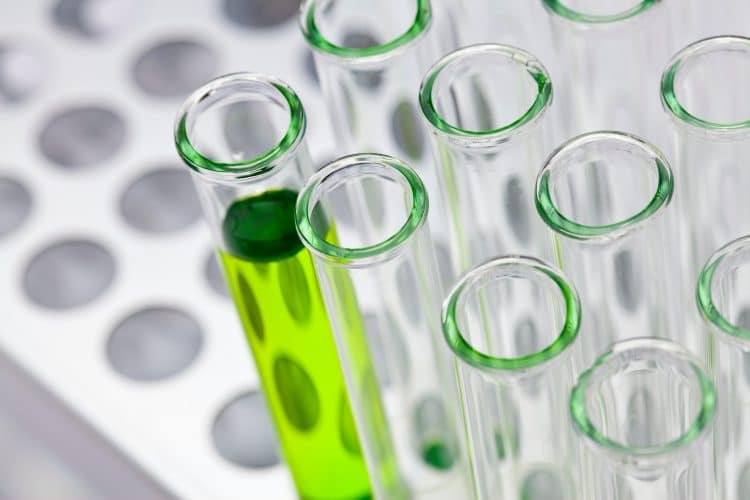Cannabidiol (CBD) has natural antioxidant, anti-inflammatory, and antibacterial properties which make it attractive as a cosmetic ingredient. Cosmetics are regulated by the Food and Drug Administration (FDA) and are required to meet regulatory standards for safety. This can include accurate quantification of ingredients. Validated methods ensure that techniques are accurate, repeatable, and suitable for the test substance. However, some particular types of cosmetics can present complications to conventional test methods.
As Huber et al [1] explain, “To accurately measure and control the CBD content in those products, reliable quantifications are highly necessary. Due to the strong matrix effects, resulting from cream base and other interfering compounds, efficient sample preparation techniques have to be developed.”
Method for Testing CBD in Cosmetics
CBD can be quantified using liquid-liquid extraction (LLE) techniques. [1] LLE is not ideal for manufacturing-scale testing though because it is time consuming, uses large amounts of solvents and is not environmentally friendly due to the types of solvents used.
In a recent study, Huber et al [1] propose the use of liquid-phase microextraction (LPME) or liquid-liquid microextraction (LLME) using an environmentally friendly ionic liquid solvent called 1-butoxy-3-ethoxy-2-ethyl-imidazolium-bis(trifluoromethane)sulfonimide—[BuEtEtIMO] [Tf2N].
After synthesizing the novel ionic liquid solvent—known as ‘room temperature ionic liquid’ due to having a melting point below 25º C—they performed design of experiments to optimize the procedure. The optimized steps consisted of:
- Weighing 15 mg cream
- Adding 0.5 mL methanol and 30 μL ionic liquid
- Sonicating the suspension for 30 minutes at 40º C
- Separating the salve with centrifugation at 14,000 rpm for 10 minutes
- Evaporating using a SpeedVac Concentrator
- Diluting remaining ionic liquid with acetonitrile (1/29 v/v)
- Quantifying using high performance liquid chromatography (HPLC) with ultraviolet detection (UV)
Advantages of Green Solvents and Small-Scale Test Methods
LPME and LLME do not utilize as much solvent as LLE so they are advantageous when coupled with new ionic liquid solvents. Ionic liquids are safer and more eco-friendly than conventional solvents like methanol. The researchers note “low vapor pressure, thermal and electrochemical stability, no flammability, as well as the potential to dissolve both organic and inorganic substances.”
Ionic Liquids for CBD Cosmetic Testing
To test the suitability of this novel room temperature ionic liquid, the research team performed analysis using HPLC with UV followed by molecular analysis with nuclear magnetic resonance spectroscopy (NMR). They validated the technique with eight real-world samples (ointments and creams) from seven different stores. These included both oil-in-water and water-in-oil emulsions. Interestingly, all concentrations were lower than labels, and results demonstrated that “some products do not even contain CBD (even though it was promoted as CBD product).”
Validation measures included selectivity, limit of detection, limit of quantitation, linearity, accuracy, precision, recovery (80%), and stability. The team demonstrated that extraction with the ionic liquid was more selective than extraction with pure methanol. Since this method performed on par with conventional methanol analysis, it could prove to be useful given rising concerns about CBD product quality and issues with consistency with CBD potency.
Image: Bill Oxford on Unsplash
Reference
- Huber S, et al. Novel room temperature ionic liquid for liquid-phase microextraction of cannabidiol from natural cosmetics. 2020;7(3):45. doi:10.3390/separations7030045. [Impact Factor: 1.900; Times Cited: n/a]











